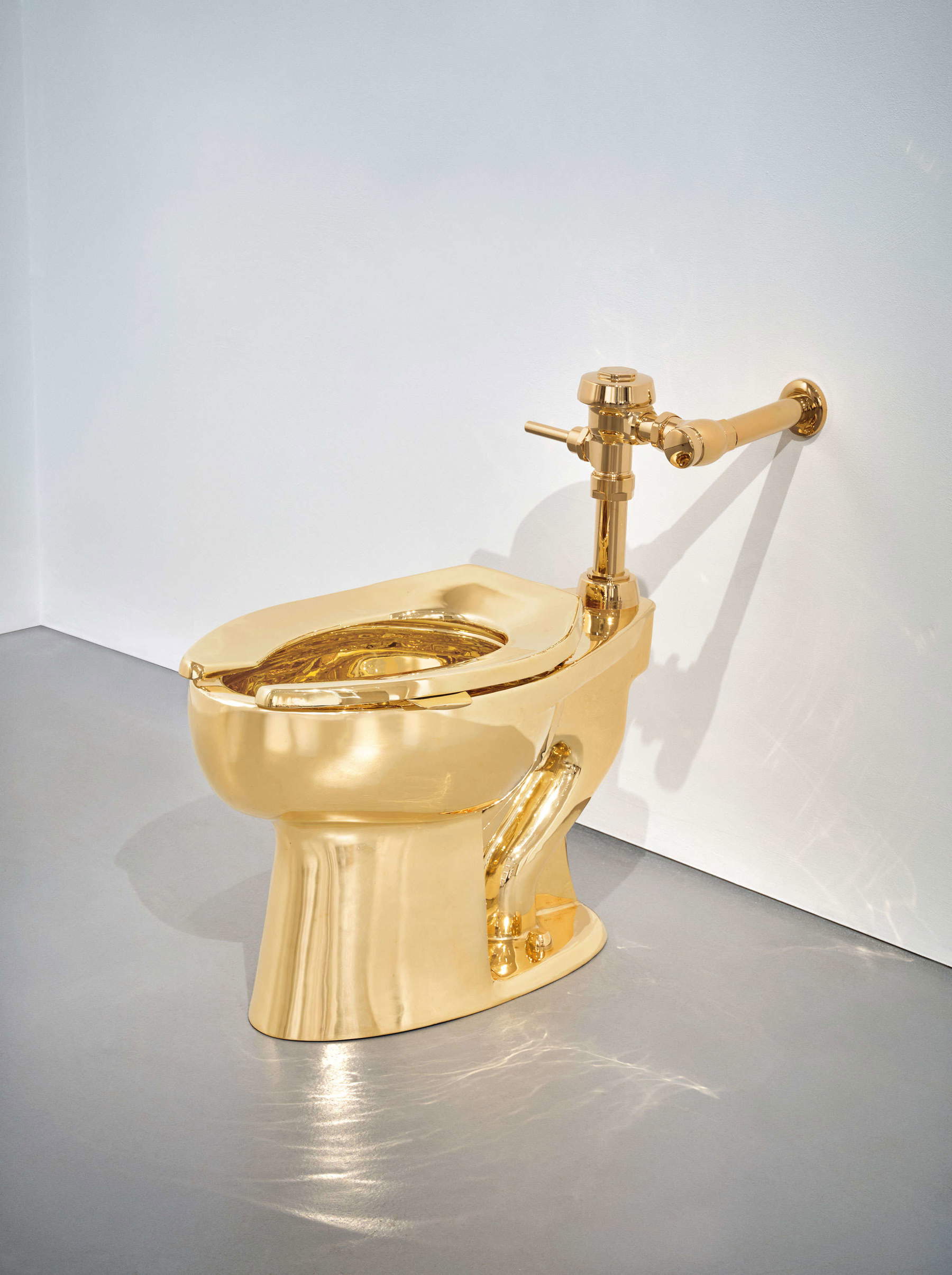On the night of Sotheby’s auctions, the most striking result is not the Klimt painting sold for $236 million but Maurizio Cattelan’s postmodern toilet at only $12 million with an auction base of $10 million. This means that the gold toilet only totaled the cost of the metal and the auction fees. This means that at the moment Maurizio Cattelan’s perceived quotation is the cost of making the work and nothing more. Any margin is gone. Theoretically, today his banana is back to costing only the price of the banana, which is 1.50 euros.
The Golden Toilet, which derives from the post-modern elaboration of Marcel Duchamp’s famous urinal, and is titled America, offers us a bitter and ironic reflection on our present. Paradoxically more true and interesting today than in 2016, when the work was first presented. We think of “Gilded Trumpism” creeping everywhere in the world, including Russian hierarchs, gilded resorts to be made in Gaza, corrupt Ukrainian officials, and million-dollar deals with Saudi Arabia. But then how will all this end? The golden toilet suggests it to us. With the usual bitter-ironic cynicism of the fresh 65-year-old Maurizio Cattelan. But this time something didn’t work. Strange, because usually Cattelan prepares the provocation but also the safety net: proposing something for sale and going wrong for Cattelan is not allowed. Perhaps it’s one thing to find someone who can buy the banana for 120,000 euros or 6 million cryptocurrencies (eventually the cost of a global commercial), it’s another to find someone who can exceed $17 million for a gold toilet (this was the figure reached at ’auction by Maurizio Cattelan’s Him work in 2016). If we combine this mishap of the infallible Cattelan with rumors of international crisis in the contemporary art market, we understand that perhaps something is changing.

The speculative bubble on the contemporary market may be bursting, or maybe it has already burst and no one has the courage to say so. Because the worst thing after the art market crisis is to declare the art market crisis as something destined to worsen the moods and trends of the market itself. Like when they ask gallery owners after the fair how the fair went: stupid question, because it is basically forbidden to complain as an inevitable prelude to a worsening situation. After all, if we go around exhibitions, fairs, biennials and quadrennials, it always seems to be in the exact same fair that has been repeating itself for years and years. Works all the same, homologated and repetitive. With young artists squinting between a reassuring and predictable painting and the reworking of the vintage marketplace under the house. But do they know that a contemporary work, to demand so much money in return, must witness valuable ways of seeing and dealing with the present? Proposing a similar Babylonian head or a painting aping the transavantgarde may not work. But it certainly can feed a market with inflated prices that over the years has eliminated in collecting any real interest and passion, beyond buying something from the hype gallery to feel, not only rich, but cultured and sophisticated.
In the last two decades on contemporary art we have bought the names and brands of galleries, without any attention to quality, convinced that whatever we throw into an Art Basel booth assumes value and therefore price. So why struggle to research and select quality? Selling at inflated prices (we wrote about this recently in this article on Artissima 2025) is not good news in the long run because it pollutes the market until a day (and maybe we are close) when the speculative bubble will burst and it will be very difficult to rebuild the confidence and passion of collectors.
Warning: the translation into English of the original Italian article was created using automatic tools. We undertake to review all articles, but we do not guarantee the total absence of inaccuracies in the translation due to the program. You can find the original by clicking on the ITA button. If you find any mistake,please contact us.